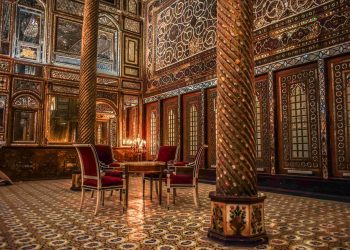Creative Designers for Modern Spaces
Design is no longer just a matter of aesthetics; it’s a powerful medium that defines how we interact with spaces, experience life, and envision the future. The role of designers has evolved dramatically over the years. A modern space is not merely functional or visually pleasing; it is often a statement of identity, purpose, and progress. We need more than artists; we need visionaries who question norms and redefine possibilities.
From a Designer’s Experience to Universal Insights
As a designer myself, I’ve found that creativity often springs from disruption—questioning why things are done a certain way and envisioning how they could be transformed. When I was working on a collaborative project for a community space, I noticed how rigid traditions in design can alienate the very people they aim to serve. It was through engaging with the community—listening, observing, and fostering dialogue—that the space transitioned from being merely functional to becoming an inclusive expression of human connection.
What this taught me is that design is inherently social. Modern spaces must adapt to cultural shifts, psychological needs, and technological advancements. Designers must become cross-disciplinary thinkers, diving into fields such as sociology, psychology, and entrepreneurship to truly innovate.
Challenging Conventions in Design
The phrase “less is more” dominates conversations about modern design, but this minimalist mindset can often strip spaces of their soul. Why should elegance demand emptiness? Imagine walking into a living space that feels cold and impersonal because it has been stripped to its bare essentials. Instead of focusing purely on simplicity, designers should explore balance—a harmony between sensory richness and purpose.
Take biomimicry as an example. Inspired by nature, design solutions can offer both functionality and vitality by mimicking the complexity and resourcefulness of ecosystems. This approach moves beyond conventional aesthetics and opens doors to designs that breathe life into spaces.
The Fusion of Technology and Architecture
Technology is reshaping the way we think about design. Smart materials, augmented reality, and AI-driven simulations give designers unprecedented control and vision. Imagine creating a digital twin of a space and being able to test its usability and emotional impact on its inhabitants before construction even begins.
Some designers worry that technology may overshadow their craft, but this concern is misplaced. When used ethically and creatively, technology supplements human ingenuity rather than replacing it. Incorporating machine learning into design can analyze behavioral patterns, suggesting configurations that maximize comfort, productivity, or sustainability.
Breaking Boundaries Across Professions
Design isn’t confined to architecture; it’s a philosophy applicable to every industry. A well-designed business strategy operates much like a well-designed space—it accommodates people, encourages productivity, and inspires vision. Entrepreneurs, educators, and technologists have as much to learn from the principles of thoughtful design as architects or interior specialists.
Consider Apple, whose product design and retail stores are synchronized into a seamless user experience. The stores aren’t just places to buy gadgets; they are experiential hubs that merge technology, design, and branding into a cohesive narrative. By borrowing cues from fields outside traditional architecture, designers can push boundaries and redefine modern spaces.
Future Trends to Anticipate
The future promises exciting advances for designers willing to adapt and evolve. Sustainability will be a cornerstone of modern spaces, incorporating materials that regenerate over time rather than degrade. Virtual and hybrid spaces will blur the lines between physical and digital interaction. Think of immersive environments where holographic walls shift according to your preferences, or modular spaces that can transform overnight into entirely different venues.
Society’s value systems will continue to infuse themselves into design. Diversity, inclusivity, and emotional intelligence will shape how spaces are envisioned and created. Gone are the days where design was dictated solely by economic or utilitarian concerns; today’s visionaries must build spaces that people feel are reflections of themselves.
Action Steps for Aspiring Designers
- Constantly educate yourself by exploring disciplines relevant to design, such as psychology, urban planning, and sustainability.
- Challenge norms and question long-held assumptions about what defines “good design.”
- Embrace technology but remain critical of its ethical implications and limitations.
- Engage with communities to understand deeply who your designs are for and the impacts they’ll have.
- Build flexibility into your projects to address future changes in culture, technology, or functionality.
Design is not a static profession. It’s a living, breathing exploration of human progress. The more you think critically, learn broadly, and act courageously, the closer you’ll come to leaving a meaningful impact on the spaces—and lives—you touch.












